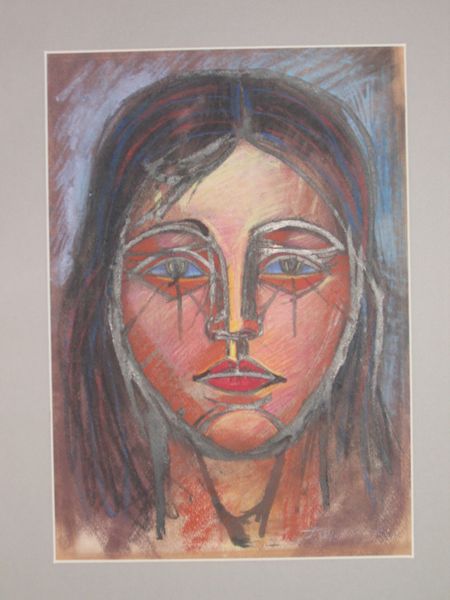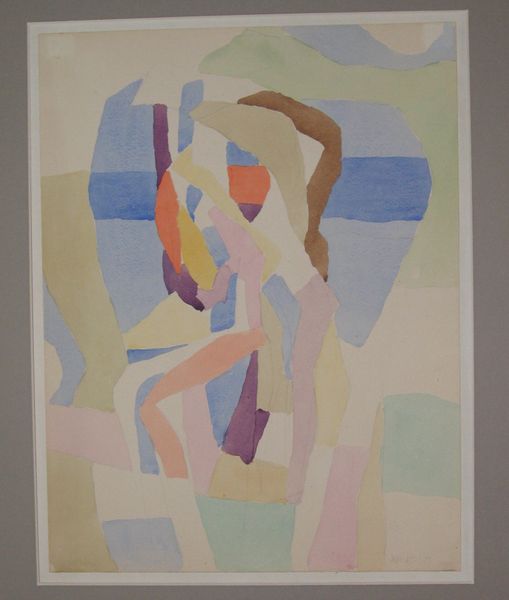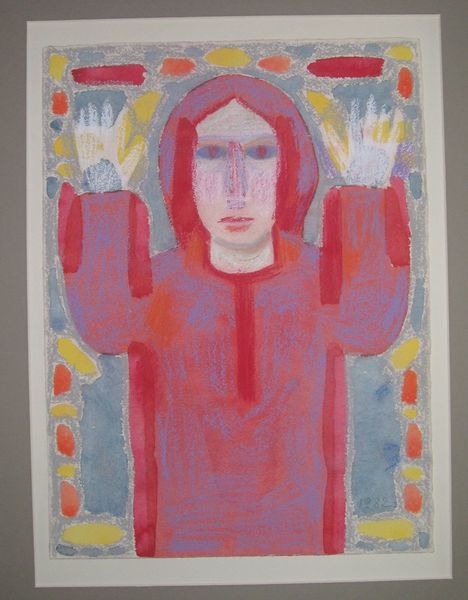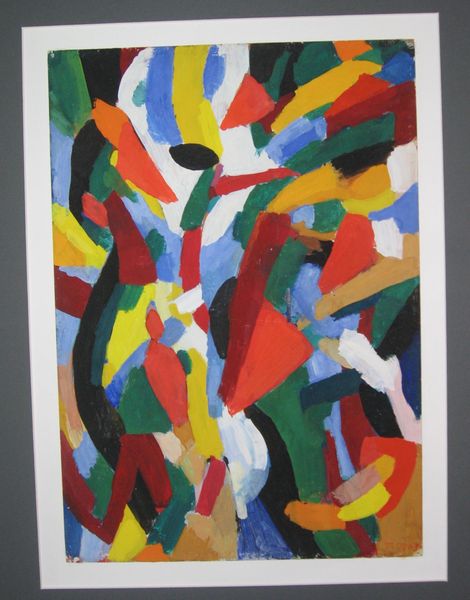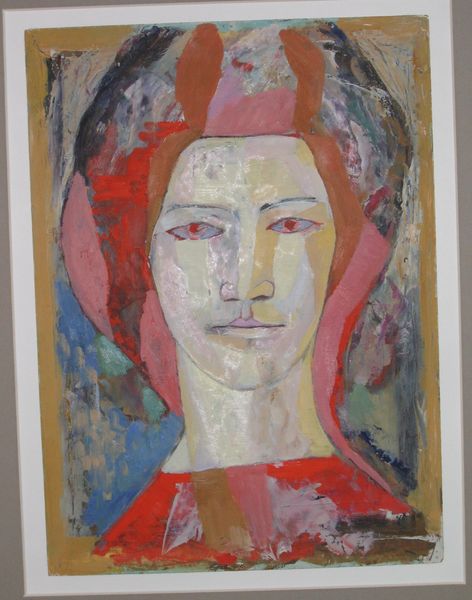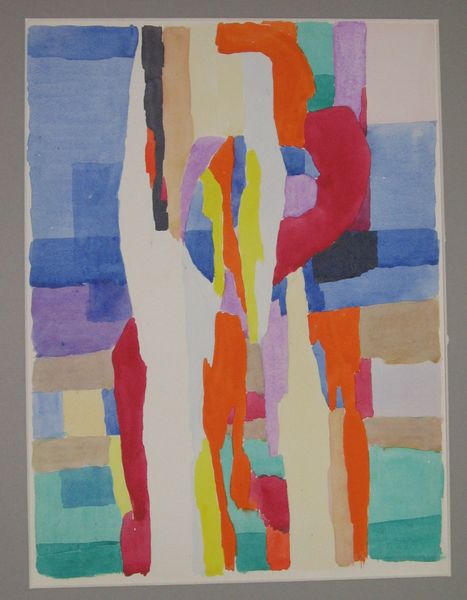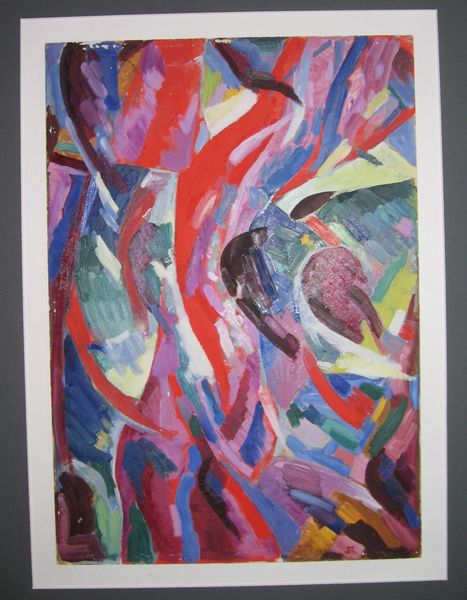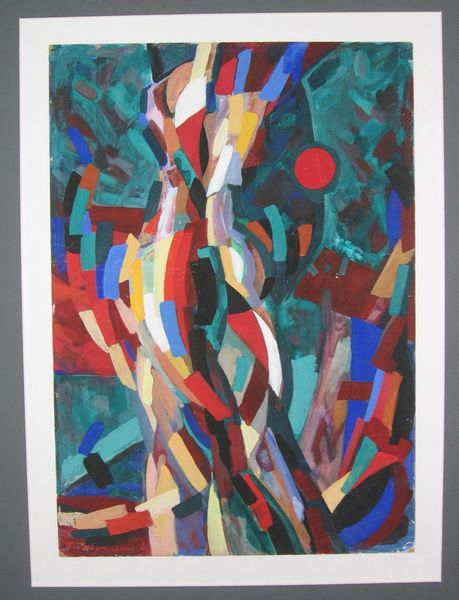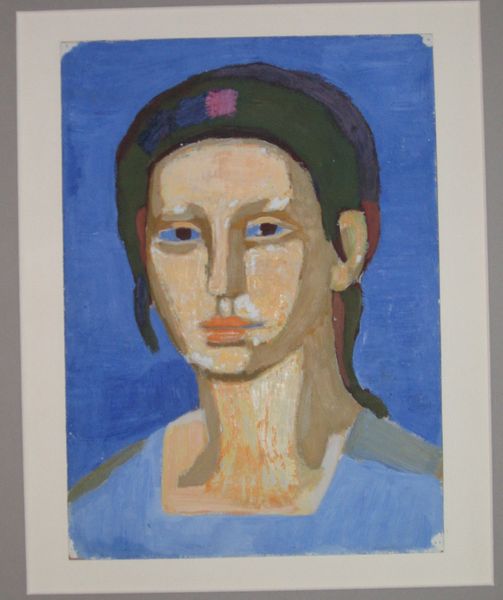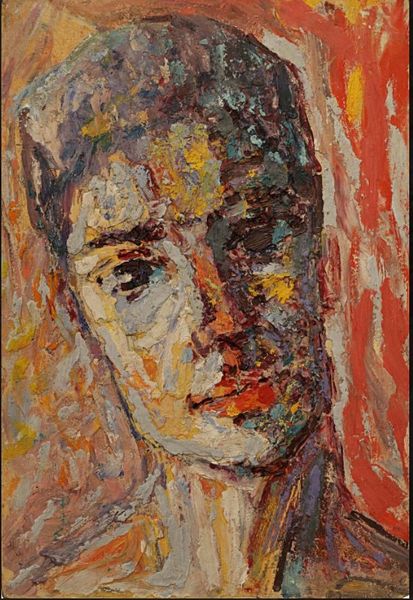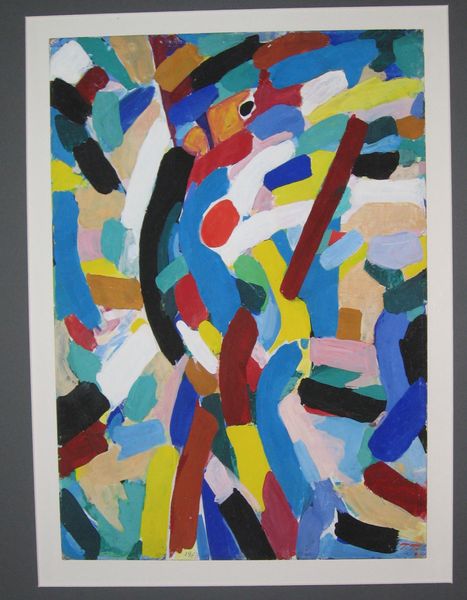
Copyright: Hryhorii Havrylenko,Fair Use
Curator: This is "Female Image (Nika's Head)" painted in 1964 by Hryhorii Havrylenko, an acrylic on canvas. Editor: It's strikingly direct, almost brutally so. The color choices are quite bold, clashing yet somehow holding together. Curator: Absolutely. Look how the artist employs a fragmented figuration; the head is broken down into blocks of colour. The interplay of orange, blue, and white is really dynamic. It moves away from purely representational portraiture. Editor: Indeed, a striking departure from the rigid Soviet Realism endorsed by the state at the time. We must remember Ukraine in 1964, under strict control. A work like this… it could be interpreted as quietly subversive. This wasn't just art for art's sake. It was an assertion of individual expression. Curator: A key formal element that facilitates this expressive turn is the gestural brushwork, each stroke feels deliberate, laden with the artist’s intention. See the eyes: almost cartoonish shapes in yellow, forcing the viewer to reconstruct the woman’s gaze. It embodies an expressive power. Editor: One wonders who Nika was… Or maybe the title, “Nika’s Head” is to act as a symbolic fragment for the universal feminine identity. Considering it dates to the "Thaw" period under Khrushchev, it may express a new cultural openness – a desire for connection with European models while redefining their own national identity. Curator: What’s intriguing to me is the very lack of specific detail: this could be any woman, or no woman in particular. It transcends pure portraiture through its geometric abstraction, edging closer to pure form. It’s Havrylenko's focus on compositional structure that most informs its power, its affective reach. Editor: Yes, and understanding those historical tensions underscores its impact; seeing beyond the surface to its historical moment of production. It invites questions about personal expression in a constrained society and what portraiture means. Curator: Thank you, considering the interplay between formal qualities and potential sociopolitical contexts adds a very rich layer to our understanding. Editor: Exactly. These brushstrokes embody freedom; seeing art as active social participation allows us a powerful message today.
Comments
No comments
Be the first to comment and join the conversation on the ultimate creative platform.
